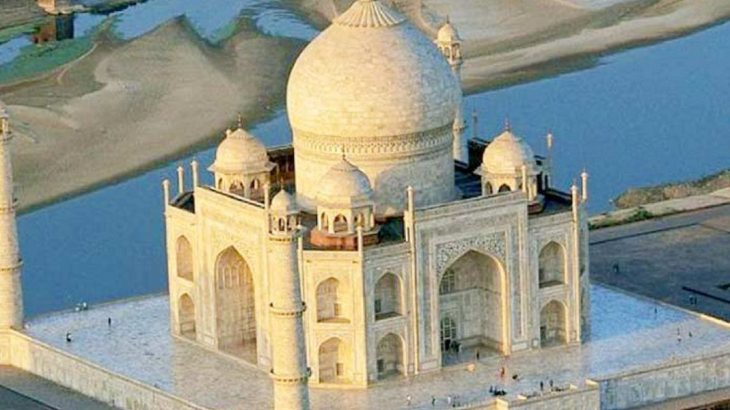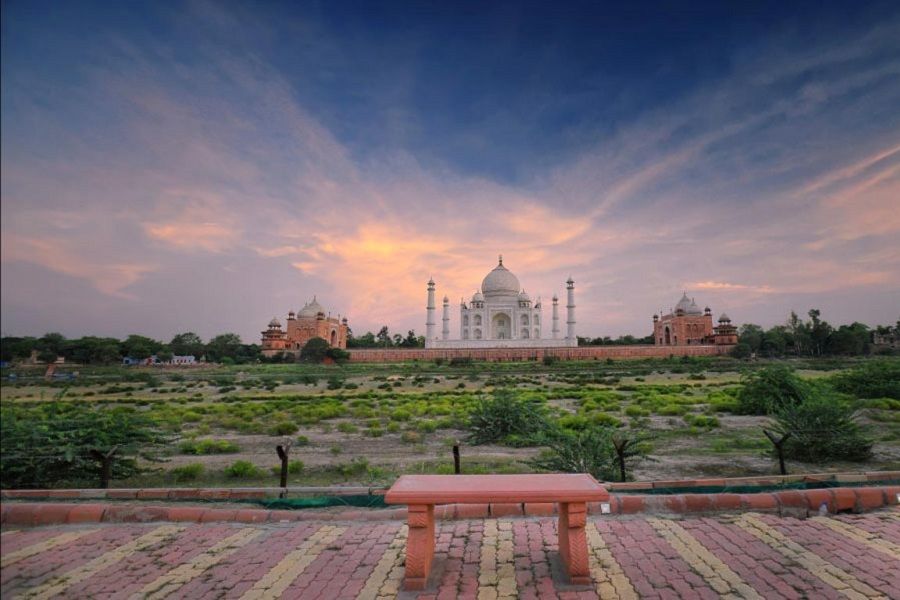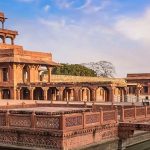Located along the banks of the River Yamuna, Agra stands as one of India’s most remarkable heritage sites and is an essential destination within the Golden Triangle tour. The city is home to numerous ancient temples, mosques, forts, mausoleums, tombs, and historical monuments. Among these, the Taj Mahal, recognized as one of the Seven Wonders of the World, is the most distinguished. This exquisite white marble mausoleum was constructed between 1632 and 1653 by Mughal emperor Shah Jahan in honor of his beloved wife, Mumtaz Begum. It is celebrated as the finest example of Mughal architecture globally and is often referred to as the “Jewel of Muslim Art in India.” In addition to the Taj Mahal, Agra offers several other notable tourist attractions. Below is a list of must-visit places as part of the Agra 2-day trip itinerary.
Day 1 Places to Visit :
Taj Mahal
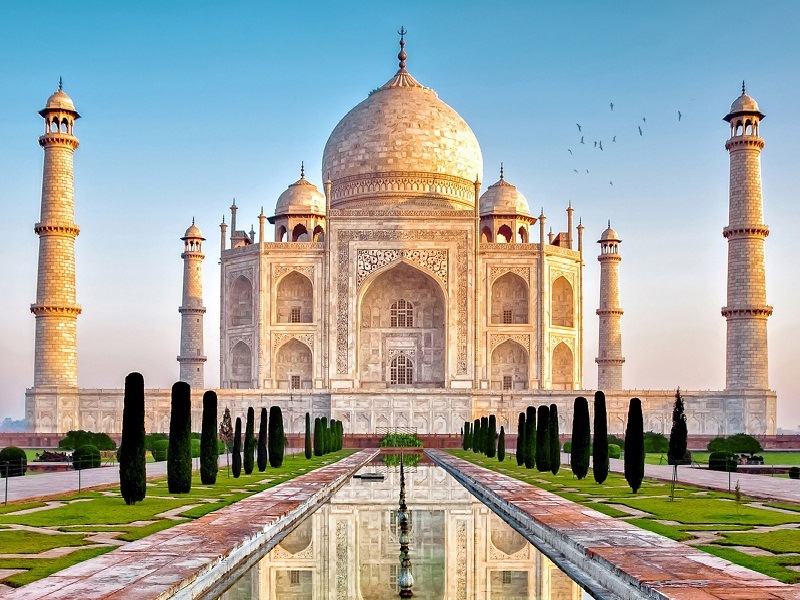
Situated on the southern bank of the Yamuna River, the Taj Mahal stands as one of the most renowned tourist attractions globally and is an essential inclusion in the Agra tour packages. It is the face of Agra Tourism and ranks among the key heritage sites near Delhi. This grand mausoleum, constructed from white marble, was commissioned by the Mughal emperor Shah Jahan between 1632 and 1653 in honor of his beloved wife, Mumtaz Begum. Recognized as a UNESCO World Heritage Site in 1983, the Taj Mahal is celebrated as one of the finest examples of Mughal architecture, showcasing a blend of Indian, Persian, and Islamic architectural styles. The interior chamber is octagonal and adorned with intricate lapidary work featuring precious and semi-precious stones. The exterior is embellished with paint, stucco, and detailed stone carvings. A prominent characteristic of this tomb is its marble dome, often referred to as an onion dome, which is adorned with a lotus motif and topped with a gilded finial surmounted by a crescent moon. Additionally, it is recognized as one of the seven wonders of the modern world, drawing approximately four million visitors each year.
Book Here : Agra Heritage Tour Packages
Agra Fort
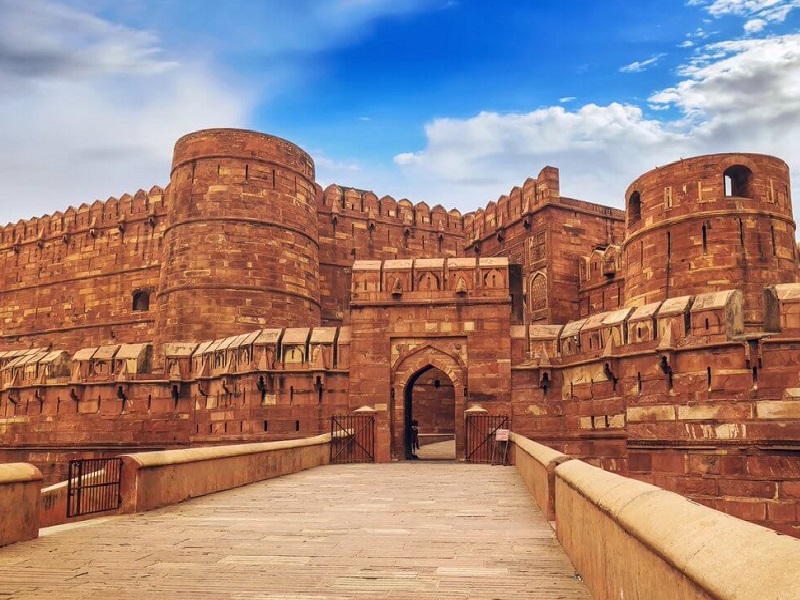
A UNESCO World Heritage monument, Agra Fort, also known as the Lal Qila or Red Fort, is one of the prime places to visit in Agra after the Taj Mahal. Initially constructed as a brick fort named Badalgarh by Raja Badal Singh, a Hindu Rajput king in 1475 AD, it was later reconstructed by the third Mughal emperor, Akbar, in 1555 CE, utilizing the remnants of Badalgarh. Encompassing an expansive area of 380,000 square meters, this semi-circular fort is encircled by a formidable 70-foot-high wall. As visitors traverse the various structures within the fort, such as Shish Mahal, Khaas Mahal, Diwan-i-Khas, Diwan-i-Aam, Moti Masjid, and Nagina Masjid, the rich history of the site comes to life. Additionally, the evening sound and light show, which vividly narrates the history of Agra Fort, is a highlight for those exploring the essential sites during the Agra 2-day Tour.
Book Here : Agra Honeymoon Packages
Jama Masjid
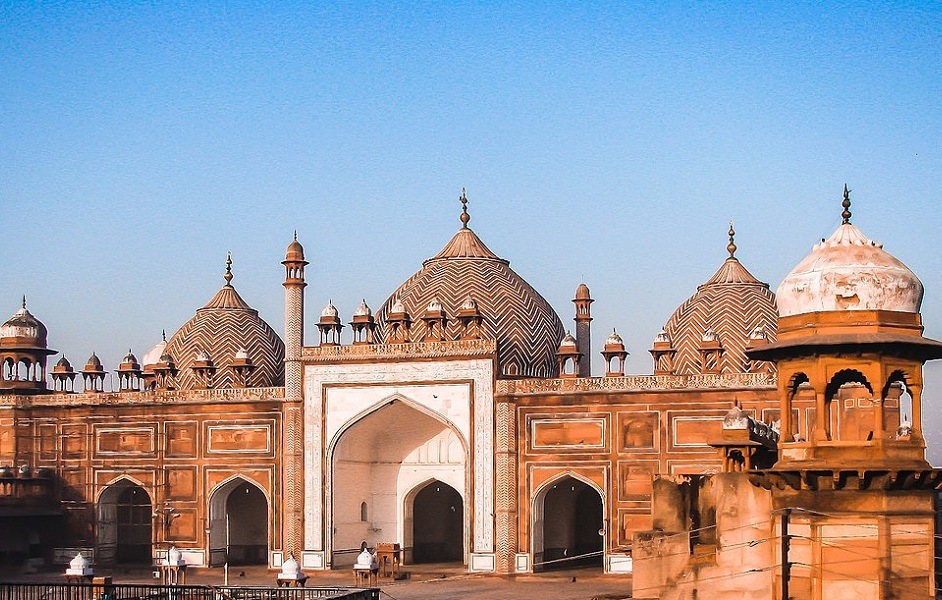
Jama Masjid, commonly referred to as the Jami Masjid or Friday Mosque, is located directly across from the Red Fort in Agra and is an essential inclusion in Uttar Pradesh tour packages. Constructed by Emperor Shah Jahan in 1649 for his daughter Jahanara Begum, it ranks among the largest mosques in India and is a prominent tourist attraction in Agra. This magnificent mosque, built from red sandstone, is celebrated for its intricate designs and distinctive architectural style. Characteristic of Mughal architecture, the mosque features a spacious elevated courtyard flanked by arched porticoes on the north and south sides, with a central fountain. The prayer hall, situated at the western end of the courtyard, can accommodate up to 25,000 worshippers simultaneously. The mosque’s grand dome, impressive archways, and exquisite tapestry contribute to its enchanting atmosphere. Agra is recognized as one of the most significant places to visit near Delhi.
Book Here : Agra Family Packages
Day 2 Places to Visit :
Akbar’s Tomb – Sikandra
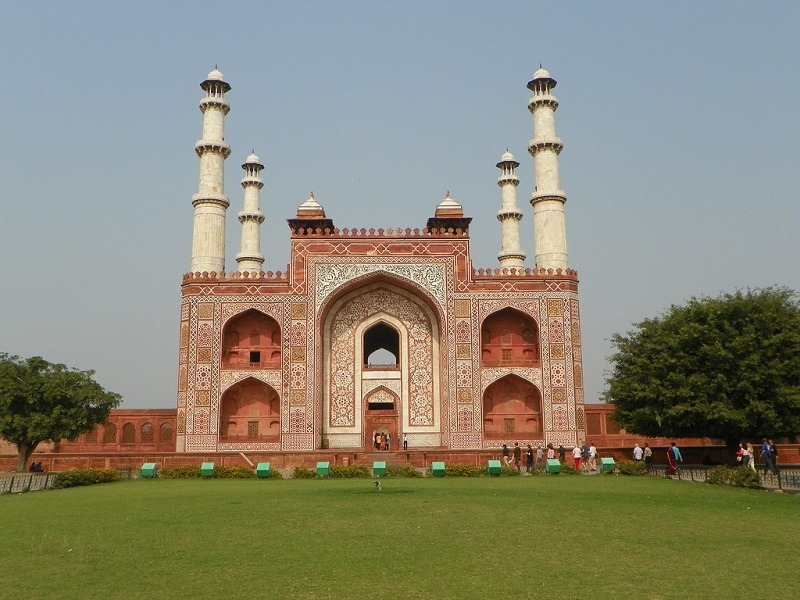
In addition to the globally acclaimed Taj Mahal, Sikandra is another significant site to explore during an Agra tour from Delhi. This location is the final resting place of the illustrious Mughal Emperor Akbar. Situated in Sikandra, the construction of Akbar’s Tomb commenced in 1605 under the direction of Akbar himself, but it was his son Jahangir who completed the project in 1613 following Akbar’s death in 1605. This remarkable structure, crafted from deep red sandstone, exemplifies a blend of cultural influences, showcasing elements of Arabic, Persian, and Hindu architecture. Visitors enter through a magnificent southern gateway reminiscent of the Buland Darwaza in Fatehpur Sikri. The tomb, which features a pyramidal design and rises five stories, is elegantly positioned at the heart of a Charbagh-style garden, making it a must-visit destination during your Agra 3-day tour.
Book Here : Agra Couple Packages
Mariam-uz-Zamani Tomb
The Tomb of Mariam-uz-Zamani serves as the mausoleum for Jodha Bai, the Hindu wife of Mughal Emperor Akbar. Constructed by Jahangir in honor of his mother, Mariam-uz-Zamani, this tomb is situated near Akbar’s Tomb in Agra, among the notable heritage sites near Jaipur. Originally established as a baradari by Sikander Lodi in AD 1495, the structure was later transformed into a Mughal tomb through the reconstruction of its four facades in the Mughal architectural style. This square tomb is centrally located within a Mughal garden. The facades of the baradari are embellished with red sandstone, intricately cut into various panels, and featuring geometrical patterns carved in bas-relief. Each corner of the edifice is enhanced by an ornamental octagonal tower. It is considered an essential destination for visitors on an Agra tour from Jaipur.
Book Here : Agra Leisure Packages
Tomb of Itimad-ud-Daulah / Baby Taj
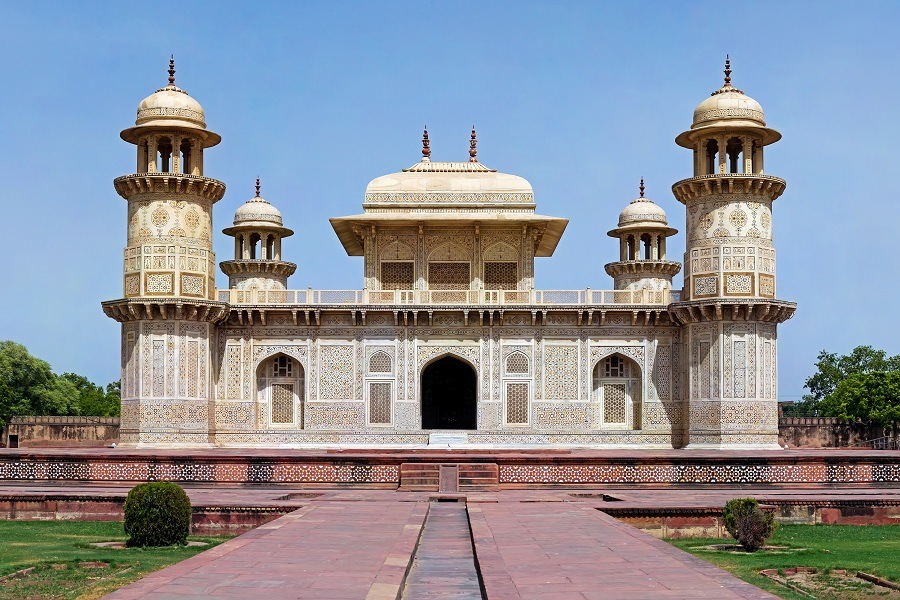
Located on the western bank of the Yamuna River, the Tomb of Itimad-ud-Daulah is a Mughal mausoleum built between 1622 and 1628 by the Queen of Jahangir, Nur Jahan as a memorial to her father, Mirza Ghiyas. It is also known as the Jewel Box or Baby Taj as it is believed that this tomb was the inspiration behind the construction of the Taj Mahal, among the most visited places in Agra 4-day tour. The Tomb represents the perfect blend of Mughal and local architectural styles and is the first monument in India built entirely with marble. Among the must-include places in Agra packages, the tomb stands 21 m high and features 12 m tall dome-roofed octagonal minarets at each corner along with a central hall, which houses the tomb of Mirza Ghiyas Beg and his wife Asmat Begum.
Also Visit : Prominent Tourist Places near Jaipur
Mehtab Bagh
Mehtab Bagh is a charbagh garden located to the north of the Taj Mahal complex, across the Yamuna River. It was the last of eleven Mughal-built gardens along the Yamuna River. Emperor Shah Jahan recognized the crescent-shaped floodplain, adorned with grass, as an ideal vantage point for observing the Taj Mahal from a distance. He envisioned it as a pleasure garden illuminated by moonlight, naming it Mehtab Bagh between the years 1631 and 1635. Spanning 25 acres, this square-shaped garden features fountains, pools, and several pavilions. Additionally, it encompasses a large pond at its periphery, which beautifully reflects the image of the Taj Mahal. Often referred to as the Moonlight Garden, it offers a breathtaking view of the Taj Mahal during full moon nights.
